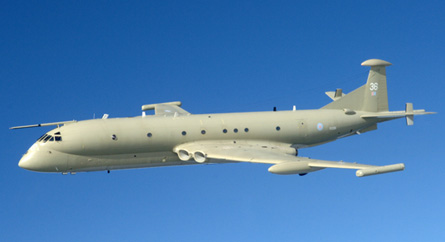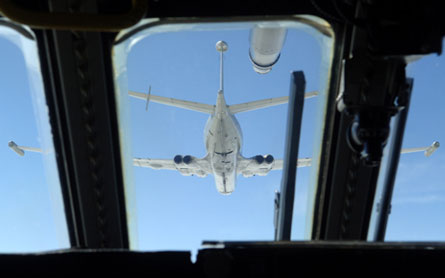The UK Ministry of Defence failed to fully recognise the risks posed by fuel system leaks aboard the Royal Air Force's British Aerospace Nimrod MR2 reconnaissance aircraft for around two decades prior to a September 2006 accident involving the type, according to a newly published Board of Inquiry report.
Aircraft XV230 exploded over Afghanistan after a fire broke out immediately after it had finished taking fuel from an RAF Lockheed Tristar tanker, killing 14 personnel. Its crew had been attempting to reach nearby Kandahar airfield and were initially unaware of the fire's catastrophic nature because of a lack of sufficient onboard fire reporting equipment.
 |
|---|
© Crown Copyright |
The BOI says the probable cause of the accident was fuel venting from the aircraft's number one fuel tank and coming into contact with an exposed hot air pipe in the No 7 tank dry bay towards the rear of its starboard wing: a risk which the RAF confirms had been identified during flight testing of BAe's ultimately cancelled Nimrod AEW3 airborne early warning aircraft in the mid-1980s. The service confirms that no corrective action was taken on the MR2 fleet, and describes this as "particularly disturbing".
In an unprecedented step, both chief of the air staff Air Chief Marshal Sir Glenn Torpy and secretary of state for defence Des Browne have publicly apologised for the accident, and agreed to a fresh review into the Nimrod's safety to be conducted by a team headed by a senior Queen's Council. This could prompt a public inquiry into the 2 September 2006 accident, the MoD says.
The MoD has already accepted 21 of the 33 recommendations made by the BOI, with another eight still under consideration and four - including a suggestion to assess the use of crew parachutes - having already been discounted. The RAF placed several operating restrictions on its Nimrod fleet following the crash, including limiting the amount of fuel taken into its number one fuel tank and preventing use of the hot air pipe to its secondary cooling pack at the rear of the aircraft.
However, the Nimrod's safety record is under renewed scrutiny, with all air-to-air refuelling involving the type having been suspended since an aircraft was forced to divert to Kandahar on 5 November after suffering a major fuel leak in mid-air. "We have been unable so far to replicate that incident on the ground," says Torpy. Nonetheless, he says that the safety measures implemented following the loss of XV230 mean that he is "content that the aircraft is fit to fly."
 |
|---|
© Crown Copyright |
The BOI - which was unable to examine the aircraft's wreckage due to its location in a hostile region with Taliban activity - identified fuel and hot air system maintenance procedures and "the overly optimistic hazard/risk categorisation of the potential threat to the aircraft caused by the collocation of fuel and hot air system components within the No 7 tank dry bay" as having contributed to XV230's loss.
RAF operations of the Nimrod MR2 are expected to continue into 2012, with the type to be progressively replaced by a fleet of 12 Nimrod MRA4s from 2010.
See Flight International's cutaway drawing of Nimrod XV230.
Should the RAF's remaining Nimrods be permanently grounded? Join the debate on Flight's AirSpace forum
Source: FlightGlobal.com
















